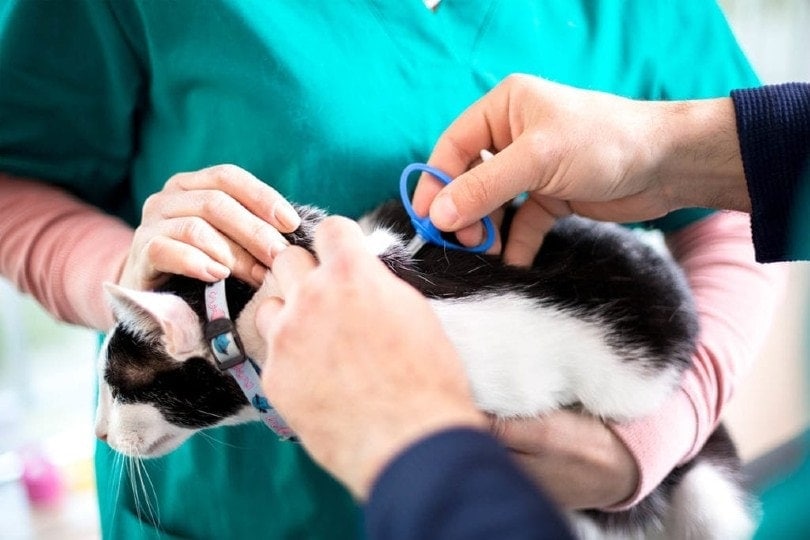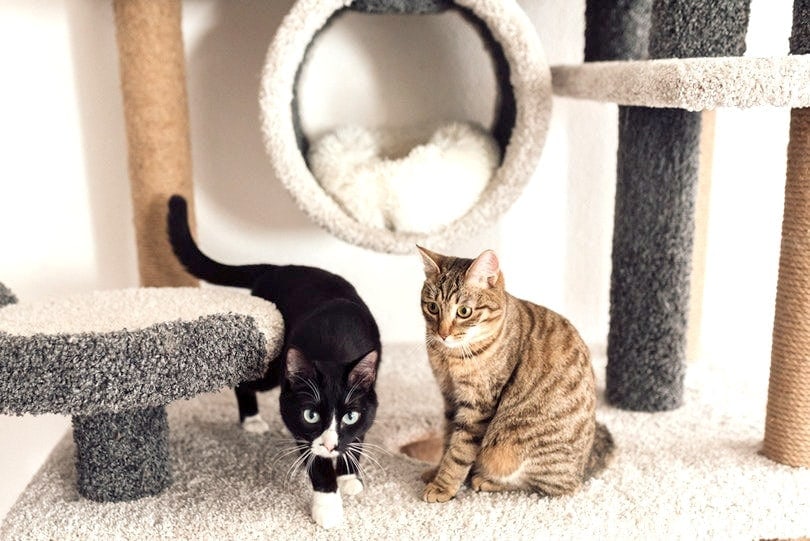VET APPROVED

The information is current and up-to-date in accordance with the latest veterinarian research.
Learn more »Click to Skip Ahead
Cat microchips play an essential role in keeping pets safe. They’re one of the most effective ways to ensure cats are returned home if they somehow manage to get out and can’t find their way back. Microchips are tiny devices that are implanted under a cat’s skin and use radio frequency identification (RFID) technology. These devices hold identification numbers that are linked to owners’ contact information retained in external databases.
They’re passive transmitters, so they only hold information, which can be read using special scanners found in most veterinarians’ offices and shelters. Microchips are implanted under the skin between cats’ shoulder blades, and the entire process only takes a few seconds from start to finish. Keep reading to learn more about how cat microchips work.

How Does It Work?
Microchips are pretty small; they’re not much larger than rice grains. Devices implanted in cats are encased in biocompatible materials, so they don’t cause reactions in most pets. They’re technically called transponders, and they only flip into action when triggered by electromagnetic waves from scanners. Because cat microchips are passive, they don’t have a battery or require a power source.1
Scanners work as receivers and transmitters. They send radio waves that turn microchips on and power them up to transmit encoded information. A tiny coil or antenna inside the capsule picks up energy transmitted from the scanner, forms a circuit, powers the microchip, and then transmits the information encoded on the chip to the scanner, where the pet’s identification number is received, read, and displayed.
Microchips don’t provide location information or work like GPS or Bluetooth trackers that provide real-time details about pets’ whereabouts. Having a microchip implanted is only one part of the process of pet identification, and the devices themselves don’t do much unless the owner of the cat has provided the correct registry with their contact information.
Without this important step, connecting the pet’s identification number with the owner’s contact information is impossible. Problems typically emerge because pet parents have either not completed the registration process or have forgotten to provide the registry with updated contact information after a move or a change in their phone number.
There’s no universal microchip registry in the US; manufacturers have their own systems, and some companies offer fee-based registration services. While it’s possible to register microchips in multiple databases, it’s essential to ensure pet parent contact information is kept up to date with all in which pets are enrolled and to ensure that microchips have been registered with the manufacturer’s registry.
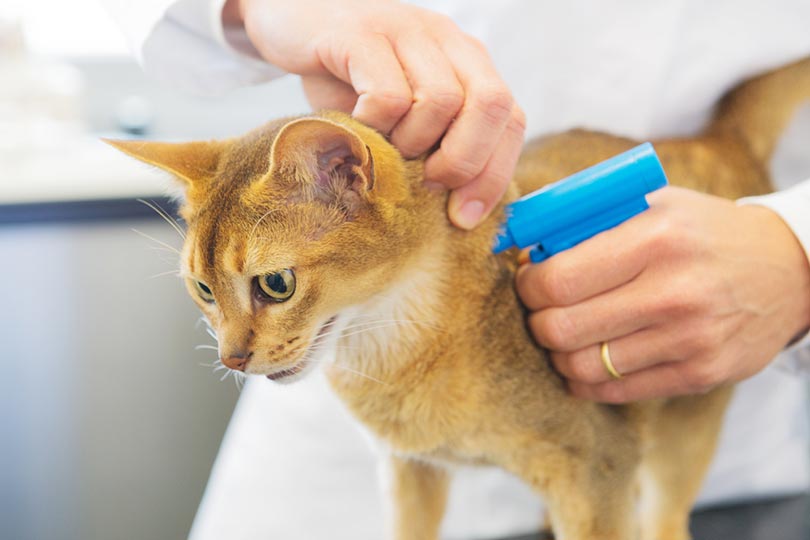
What Are the Different Types of Cat Microchips?
In the US, there are three common microchip frequencies: 125 kiloHertz (kHz), 128 kHz, and 134.2 kHz, and the products are available from several manufacturers, but most use the same general technology. The frequency of a microchip depends on the frequency of the radio wave that the scanner emits to activate and read the chip. Microchips need to be activated by a scanner with a compatible frequency, or they won’t be readable; most shelters and veterinarians in the US now have universal scanners that can communicate with microchips of all three frequencies.
The International Organization for Standardization, or International Standards Organization (ISO), has approved and recommends a global standard for pet microchips. They have designated 134.2 kHz as the universal frequency for pet microchips. The standard ensures that microchips implanted in one country can also be read in others.
Some, but not all, microchips implanted in the US are ISO-compliant, which can present challenges for pets traveling to places like the European Union, where microchips compliant with ISO standards 11784 and 11785 are required for entry. These ISO-compliant microchips are also required in Canada and Japan. In the US, it’s possible for a cat to have two microchips implanted. If they have a non-ISO-standard microchip, they can be implanted with an ISO-standard microchip.
Where Is It Used?
Microchip technology for pets is used for identification purposes and provides a way to link lost cats with their owners. The readers are universally found in shelters and veterinarians’ offices, and many cats adopted from shelters and rescue organizations are sent home with the device already implanted.
RFID technology is used in several industries, primarily to track and gather information. Because passive RFID technology doesn’t require a battery and much space, it can be embedded in products or added to thin items such as cards and stickers.
It’s inexpensive, doesn’t have a shelf life, and is helpful for keeping track of livestock and inventory management. The technology is also used in supply chain management, file tracking, and timing racers.
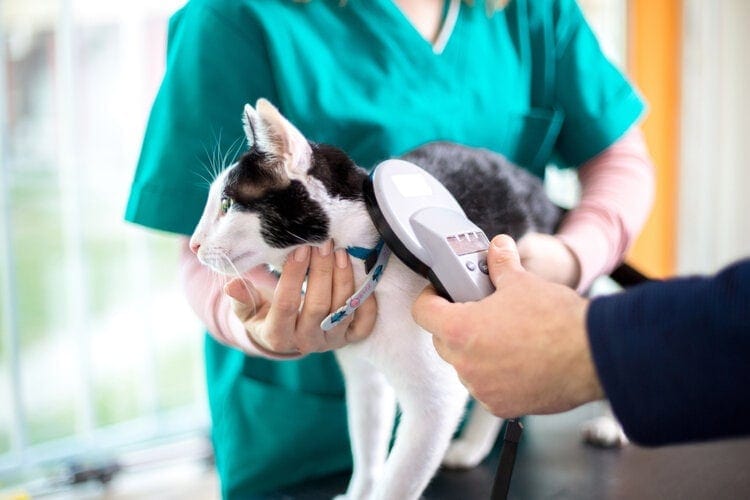

Advantages of Microchipping
Microchipping has two huge benefits for pet parents: safety and peace of mind. The process is quick, simple, and generally well tolerated by cats. It’s an important step that increases the chances that lost pets will be returned home. In many cases, microchipping can mean the difference between a cat being lost forever or safely returning home.
Disadvantages of Microchipping
There aren’t really many disadvantages to microchipping cats. The benefits of microchips outweigh the possible adverse reactions. The procedure is fast, easy, and well-tolerated. Most pets do just fine after being microchipped. The American Veterinary Medical Association (AVMA) reports that adverse reactions are uncommon. The most common are migration of the microchip, loss, failure of the microchip, and reaction at the injection site, such as swelling, hair loss, and infection. If the microchip isn’t implanted properly, serious consequences may occur, that’s why it should always be implanted by a professional, ideally a veterinarian.
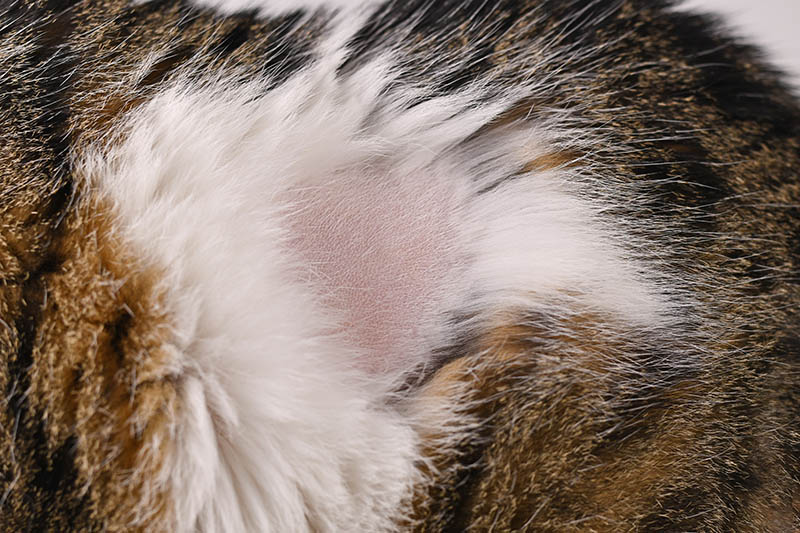
Frequently Asked Questions
Are There Other Ways to Keep Cats Safe?
In addition to microchipping, equipping cats with a collar that carries an identification tag with their owners’ contact details can go a long way to keeping them safe.
Having contact information front and center makes it easy for people to reach out if they find cats wandering about, since there’s no need to head to a veterinarian or shelter to find out how to contact the owner. Breakaway collars are the safest option as they disengage and allow cats to escape if caught on something.
Does Getting Microchipped Hurt Cats?
Cats probably experience about as much discomfort when having a microchip implanted as they do when getting a vaccination or having blood drawn.
They generally don’t need anesthesia, but it’s sometimes possible to have kittens microchipped at the same time they’re spayed or neutered, which may make the process easier for some pets to tolerate.
Do Microchips Need to Be Replaced?
Because they don’t actively transmit information or have power sources, most don’t require any sort of regular upkeep or maintenance. Like all mechanical devices, microchips can stop working occasionally, making it critical to take steps to ensure that everything is working properly.
Many veterinarians check to ensure microchips run smoothly and are in the right location during regular well-cat visits.
What About Privacy?
Microchips only contain a unique identification number that veterinarians and shelters can use to track down owners’ contact details by getting in touch with the registry that holds the information. Owners’ personal details simply aren’t stored in microchips or available when microchips are scanned.
Conclusion
Microchips are small RFID devices inserted under the skin between a cat’s shoulder blades to serve as a form of identification. These passive transponders require special scanners to read the encoded information. Each microchip contains a unique identification number, which can be registered in a database linked to the cat’s owner.
The scanner emits electromagnetic radio waves that power the microchip, allowing it to transmit its stored information through an antenna back to the scanner, where the data is displayed. Because collars and tags can be lost or removed, microchips provide a reliable, lifelong method of identification. They play a crucial role in reuniting lost cats with their owners, significantly increasing the chances of a safe return home.
- https://wsava.org/wp-content/uploads/2020/01/Microchipping-The-Importance-of-ISO.pdf
- https://www.petmd.com/cat/general-health/why-microchip-cats
- https://www.cats.org.uk/help-and-advice/neutering-and-vaccinations/microchipping-your-cat
- https://www.aspcapetinsurance.com/resources/microchipping-your-cat-or-dog/
- https://vcahospitals.com/know-your-pet/microchipping-your-cat
- https://avmajournals.avma.org/view/journals/javma/235/2/javma.235.2.160.xml
Featured Image Credit: Lucky Business, Shutterstock
